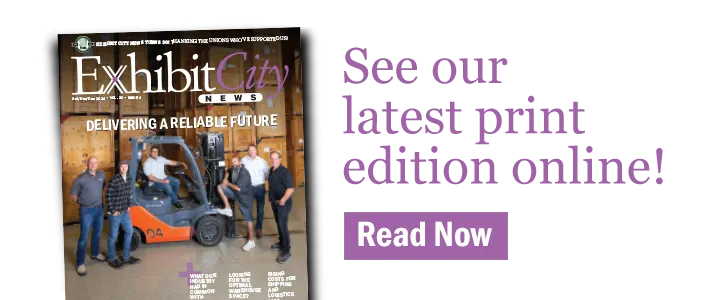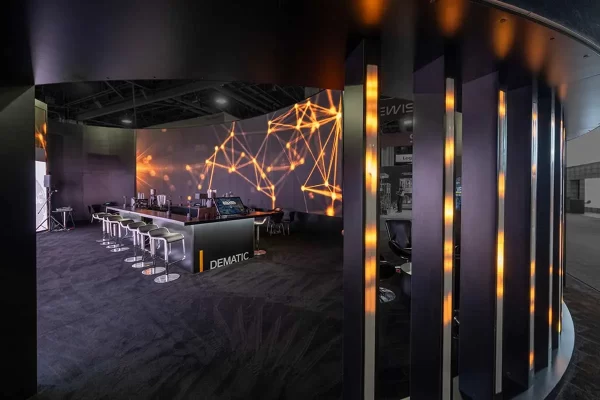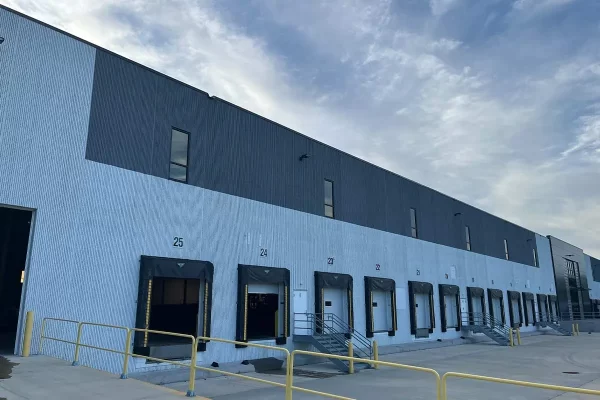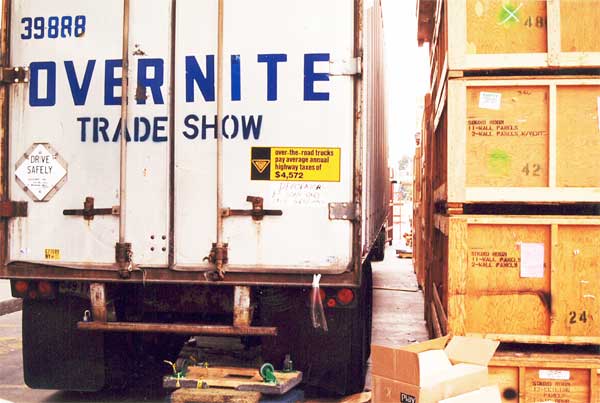
{showcomments}
As with any segment of the tradeshow industry, exhibit transportation has its own set of obstacles that must be overcome. When new economic conditions, services or trends emerge, a new set of hurdles are laid out in front of the exhibit as it makes its way to the next show floor.
Today, exhibit transportation companies are asked to provide all types of logistics solutions, including hot shot service, caravan service, long-term and short-term storage and even van line air ride shipping. And in this economy, most companies are going to find a way to grant their clients’ wishes.
“These are basic solutions applicable to any organization in any industry,” said Drey Lucibello, CEO of Champion Logistics Group. “The solution is very simple, the process or product, whether it is transportation, design or construction has become so common in all companies that the only differential in today’s product or service is the culture of our companies.”
The following Q&A discusses transportation trends and the challenges companies are facing in an industry segment that has no choice but to move forward.
The industry experts that will share their observations include Lucibello from Champion; Greg Keh, executive vice president of TWI Global; and Jason Gaon, president of Global Expo Transit.
Whatare the emerging trends in the exhibit transportation?
Drey Lucibello, Champion Logistics Group: As transportation providers scramble to recover from the recession, there are more companies claiming to have tradeshow expertise. Understanding that exhibit budgets are tight, buyers now more than ever need to do their due diligence to ensure that carriers are tradeshow qualified, financially sound and liable for their services. If the transportation provider fails to deliver, the cost of off-target charges, overtime labor and missing an event altogether can be devastating to the exhibitor that streamlined their show schedule due to limited budgets. On another note, we are happy to see that client budgets seem to be consistent or growing as their organizations begin to move toward brighter days.
Greg Keh, TWI Global: Automation is the key. Our client’s experiences are being shaped by their own personal experience in managing and ordering products online. The ability to order, process and track all online without speaking to a customer service person is becoming the norm. The movement is away from text messages, cell phones and emails to complete automation of the sales order process with online ordering and tracking. This gives the client much more control over the entire transportation process and also changes the way most companies are engaging with the client.
Jason Gaon, Global Expo Transit: We have a found that exhibitors in all three of our markets demand consistent, 24/7 status of their shipment, so we provide that information to the exhibitor in a timely manner. We also scrutinize our carrier partners so that they fully understand the complexities of the tradeshow industry. They work with the general service contractors, the service contractors and the venues. Our job is to manage the carrier partners for our exhibitors. I like to think a trend is GET being a travel agent for tradeshow freight.
What are some challenges that transportation companies run into?
Keh: Getting back to the basics, I would say that the key focus is pricing. It is so common how we all speak about competing on price versus service, how you should earn the profit you deserve and how profits are the main reason for companies to exist. At the same time, profits are at times almost negligible in the transportation sector. Rising costs of fuel and security combined with increased competition and client’s expectations for immediate solutions creates a delicate and challenging environment.
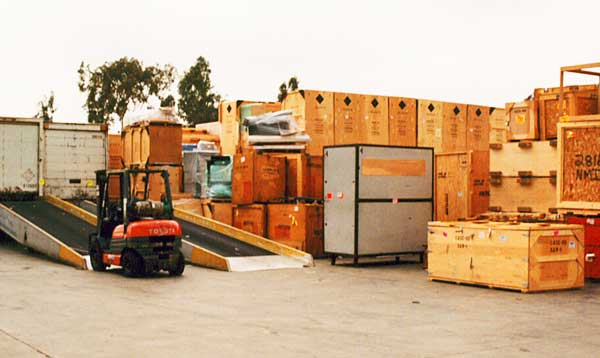
Jason Gaon, president of Global Expo Transit
The relationship often transcends pricing, yet as companies are focused on cost reduction to survive the economic condition we are all in, relationships are being put to the side. This is not impossible to resolve, it is just very unbalanced. An example is this past weekend: A client demanded that we turn over a shipment that we were handling globally for them to their own forwarder in England. We had a large exposure to monies and guarantees for the temporary importation as well as this being a very complicated return of 8 shipments with rush and non-rush items. The client pushed us to prepare everything to be ready during the weekend, so we had staff available and working at the warehouse in England ready to turn over the freight and documents. Yet the company that they requested to handle the return, a very large, well known company, was closed all weekend and did not respond until Monday. This is an example of how difficult it is to balance price and relationships.
Lucibello: Like everyone in the industry, the transportation industry is working with clients who have limited budgets. While the recovery from the recession has mirrored what economists stated would be a gradual recovery, the industry is keeping a watchful eye on decisions that Washington DC is passing as we think strategically about our future.
Gaon: We try to educate our exhibitors on the differences between shipping to a show and the standard LTL services that they are accustomed to. The service contactor does an excellent job providing the exhibitor’s with detailed instruction on shipping and material handling in their service manuals.
How does transporting exhibits overseas differ from domestic moves?
Gaon: The key behind international shipping is having a partnership with a qualified customs broker. Knowledge behind the Customs Paperwork and the differences between shipping to a tradeshow is important to effectively communicate with our exhibitors. There is also the required documentation needed to insure little delays at the Borders for Clearance.
Keh: The first differential is expectations. Most clients consider sending exhibits overseas or even to Canada and Mexico to be an extension of sending a shipment across the U.S. Due to this, they are not prepared and then problems arise. For overseas or international shows, there are several items to be careful of: Customs in a foreign country, transit times for cargo, limited flights and limited space all contribute to a different experience. Highly religious or controlling types of nations adopt much more stringent regulations as a means to protect their interests. This adds delays.
Compliance requirements for the U.S. and overseas countries creates additional wait time and delays to move freight in a timely fashion. All these differences create a much more complex move. In addition, the value of your goods and the need for precise packing list becomes much more of a challenge. The list is extensive, but is not difficult at all with proper planning.
How has the transportation industry gone green?
Keh: There are specific carrier implemented programs where there is less paperwork and copies. However, the nature of overseas customs clearance and the multitude of different parties with dissimilar systems is not conducive to going green. From the perspective of air transportation and ocean transportation, there is a natural economic push towards more fuel-efficient aircrafts and ocean vessels. However, I would not view all this as going green. This is more like keeping green in your pockets.
Lucibello: The United States Environmental Protection Agency established a program for the transportation industry by the name of the SmartWay Transport Partnership. By following the guidelines set forth by this organization, companies can earn their certification by educating drivers on idling practices, equipping equipment with alternative power units, side skirts, nose cones and fuel additives that increase efficiency and reduce emissions.
Gaon: The transportation industry is consistently researching and testing cleaner ways to burn fuel. Along with better burning motors, GPS technology allows us to find better and shorter routes to our destination.
Part 2 of this Q&A session will be available in the Exhibit City News Mid-Month News Blast and online on August 17. Part 2 will explore transportation technology, educating the industry, transporting sensitive materials and the future of the industry.




